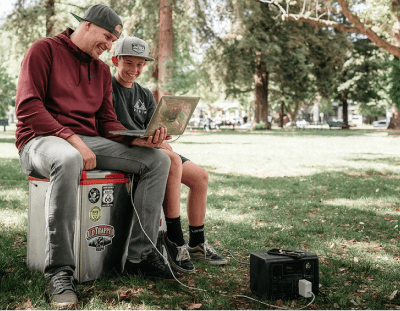Over consumption of non-renewable energy sources like oil and gas has increased at an alarming rate for years. This is why alternative power sources like solar energy have also increased in demand over the decades.
A quick review: Solar energy is the energy from the sun. You know, that big orange ball that has produced energy for billions of years? Yeah, that one. It's the cleanest, most renewable energy source known to man. It's the most reliable, too. The only time we'd run out of solar energy is when the sun goes kaput. And if that happens, then nothing else would really matter, would it?
But these are things you already know. These snippets of information have been repeated in countless articles, enacted in countless movies and discussed in countless panels. So, it got us thinking - are there other things that not many people know about solar energy?
Fueled by curiosity (and many cups of coffee), we searched the web for such info and DID find a handful. And yeah, you'll never believe these truths about solar energy:
Us humans have been using solar energy for more than 2,700 years. Glass lenses were used to make fires for cooking as early as 700 BC. By 300 BC, Early Greeks and Romans used sunlight from these pieces of glass to light torches used in religious ceremonies.
Socrates lived in a solar-heated house. Archaeologists discovered that between 500-100 BC, the ancient Greeks implemented the famous Philosopher's idea and had all the houses in the city as well as the surrounding rural areas to face the winter sun, as a way to heat up households.
The first solar cells weren't so hot.
Solar cells were invented in the 1800's and well, let's just say the first solar cell wasn't very impressive. How so? Well, the first solar cell was less than one percent efficient. Obviously, we've come so far in terms of efficiency since then.
One hour of solar energy is enough to last a year.
If we could capture only one hour's worth of solar energy, we could stop using oil, natural gas and coal for ONE. WHOLE. YEAR. And by "we," we mean all of humanity. Imagine that - one hour's worth of direct sunlight and we'd be good on the planet's electricity needs for a year.
Solar energy is the power source of choice for temporary needs.
These temporary electricity needs include mining and infrastructure projects, national events, and even The Olympics. Yes, we're looking at you Tokyo 2020 Olympics!
Solar power plants last for a looooong time. A really long time. Like more than 40 years. Making these power stations some of the most worthwhile investments nations can make in addressing energy needs.
Solar energy is the cheapest and most abundant energy in the world. For 2019, the average price per watt for solar panel system installation range from $2.67 - $3.43 in the United States. That is an almost 96% decrease from the 1970's when it cost people $76.77 per watt to have solar power systems installed in their homes or businesses.
Solar panels still work without direct sunlight. Solar panels are designed to capture the sun's different light spectrum. So, even if there's no direct sunlight or if it's a cloudy day, the panels can still capture the hues from the sky and convert that to usable electricity. Also, solar panels can still generate electricity even if they're placed behind glass. Although, they won't be as efficient as they would exposed to direct sunlight.
VoltX 12V 200W Folding Solar Mat
Solar energy is used for space ships.
Space missions by countries such as the United States and China use solar energy to power their space ships and space stations.
If it weren't for the sun, you'd be walking to work.
All fossil fuels: gas, coal and oil came into existence because of the sun. Fossil fuels after all, started life as plants and animals millions of years ago.
If it weren't for the sun, you wouldn't have hot showers or hot dinners.
Solar powered hot water systems can heat water used in homes by up to 60 degrees Celsius. In fact, the most common uses of solar energy in homes is for heating water and cooking. And with a reliable battery back up system, solar energy can provide your home with free electricity 24/7.
Solar energy can be used to power airplanes.
In 2016, explorer and pilot Bertrand Piccard flew 26,000 miles on a plane that is powered solely by solar energy.
Solar energy can be used to purify water.
No need for chemicals here. Just water and a lot of clean energy from the sun. The process is called the solar distillation process and is ideal to treat water contaminated by pathogens and heavy metals.
Molten salt is used by power plants to store solar energy.
Solar power systems use molten salt because it is an efficient, affordable material in which to store energy. Molten salt is also non-toxic and non-flammable.
Solar energy can be used to power up calculators. And don't worry about using your calculator indoors. Since fluorescent bulbs mimic the solar spectrum, the solar cells in the calculator can still power up.
You can harness solar energy wherever you go.
The availability of solar panels for camping has made it possible to bring the convenience of electricity in the outdoors. Portable solar panels are lightweight, compact and produce no smoke or noise making them perfect for camping and other outdoor activities.
VoltX 12V 100W Flexible Solar Panel
The sun provides more than enough energy to sustain the planet's needs year after year. And as we have indicated in this list - and as in all other article you would find, the advantages of solar energy's practical applications are endless.
The question is, why isn't solar energy used enough? When will solar energy stop providing only a fraction of the world's energy supply and become the main source of the planet's power needs?




